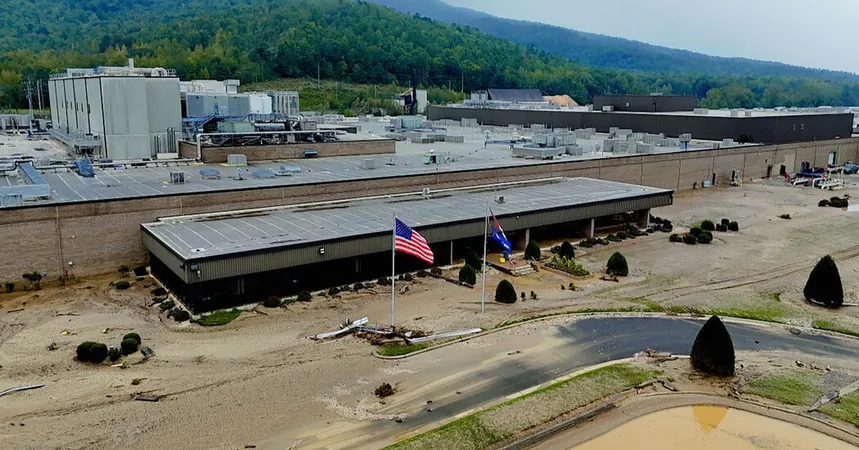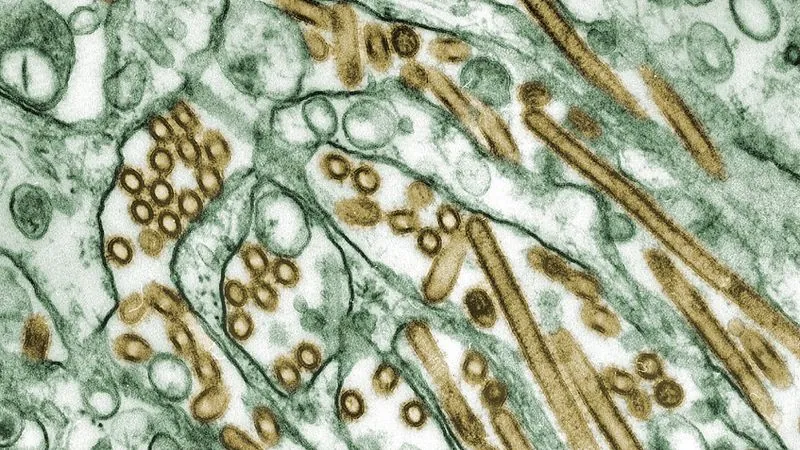
Critical IV Fluid Shortage Forces U.S. Hospitals into Crisis Mode Amid Hurricane Havoc
2024-10-09
Author: Ting
Introduction
In a swift response to the escalating crisis caused by Hurricane Helene, U.S. officials have approved the airlifting of intravenous (IV) fluids from overseas manufacturing plants to combat severe shortages impacting hospitals across the country. This shortage has resulted in the postponement of surgeries as healthcare providers struggle to ration the dwindling supplies needed for their most vulnerable patients.
Impact of Hurricane Helene
The situation arose after devastating flooding in western North Carolina compromised a key Baxter manufacturing facility, which produces approximately 60% of the nation's IV fluid supply, essential for both medical treatments and in-home care. This plant is pivotal in providing fluids for premature infants in intensive care units, patients requiring tube feeding, and those undergoing dialysis treatments.
Response to Hurricane Milton
As the crisis deepens with Hurricane Milton bearing down on Florida, the B. Braun facility in Daytona Beach, which accounts for about 25% of the IV fluid supply, is scrambling to secure its products. Workers have been proactive, loading medical supplies and moving them to safer locations amid the threatening weather conditions.
Concerns over Supply Chain
Experts have long warned about the risks associated with such a heavy reliance on a limited number of suppliers for critical medical products. Even prior to the recent storms, healthcare facilities were grappling with supply constraints, stemming from reduced participation by manufacturers in producing low-cost, low-profit medical goods.
FDA's Authorization for Importation
In a move to mitigate shortages, the Food and Drug Administration (FDA) announced Wednesday that it has authorized the importation of IV fluids from Baxter facilities located in Canada, the United Kingdom, Ireland, and China. Meanwhile, Baxter has begun to increase the limited supplies available to hospitals—recently raising the allocation from 40% to 60% of standard levels, with hopes of ramping up production at its foreign plants.
Baxter's Role in IV Fluid Supply
Baxter's facility in Marion, North Carolina, plays a critical role in manufacturing fluids vital for various healthcare needs. These include hydration before surgical procedures, medication administration—including chemotherapy—and treatments for severe conditions like sepsis. Patients reliant on these fluids for home dialysis or nutrient intake have been particularly stressed by the ongoing shortage.
Federal and Local Responses
Federal and local officials are mobilizing resources, with the Department of Health and Human Services (HHS) sending approximately 400 agency workers to assist areas affected by Hurricane Helene. Secretary Xavier Becerra has reached out to healthcare providers to emphasize the need to manage the shortage effectively and bolster public health efforts.
Historical Context of Supply Chain Disruptions
The crisis echoes past supply chain breakdowns witnessed during the COVID-19 pandemic, which left healthcare workers scrambling for personal protective equipment and critical medical supplies. Sadly, this is not the first time Baxter facilities have faced disruptions; a similar shortage unfolded after Hurricane Maria in 2017 when a Baxter plant in Puerto Rico was incapacitated.
Increased Risks to Patients
High-stakes maneuvers to maintain adequate supply levels have become the new norm as the frequency and severity of storms increase, posing a significant threat to medical supply chains nationwide. With 60% of the U.S. IV fluids sourced from just one location, the concentration of production puts patients at colossal risk.
Patients Facing Uncertainty
Patients like Hannah Hale, who relies on IV fluids to manage her Crohn's disease symptoms, are now navigating a precarious landscape with dwindling access to their essential treatments. As healthcare systems adapt to these challenges, it raises an important question: will policymakers finally take heed of the urgent need for diversifying medical supply chains to better safeguard against future crises?
Conclusion
This troubling series of events showcases the fragility of the healthcare infrastructure in the face of natural disasters and underscores a critical call to action for lawmakers and industry leaders alike.






 Brasil (PT)
Brasil (PT)
 Canada (EN)
Canada (EN)
 Chile (ES)
Chile (ES)
 España (ES)
España (ES)
 France (FR)
France (FR)
 Hong Kong (EN)
Hong Kong (EN)
 Italia (IT)
Italia (IT)
 日本 (JA)
日本 (JA)
 Magyarország (HU)
Magyarország (HU)
 Norge (NO)
Norge (NO)
 Polska (PL)
Polska (PL)
 Schweiz (DE)
Schweiz (DE)
 Singapore (EN)
Singapore (EN)
 Sverige (SV)
Sverige (SV)
 Suomi (FI)
Suomi (FI)
 Türkiye (TR)
Türkiye (TR)